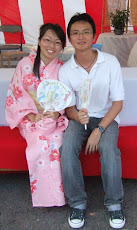It’s always glad when you can find the solutions to your mistakes which are being hanging for so long. Yeah, I think I have developed a way to improve my weak bowing skill at the end after several weeks of experimental approaches. Let’s waste no time now and I will share you the tricks under this blog entry.
Here are the few tips to keep the bow constantly go straight up and down against the string:
1. You may think about to tilt the bow slightly and catch approximately 3/4s of hair when drawing the bow over the string. This is the technique that encouraged by most of the experienced violinists in order to add the pleasantness to the tonal quality, by softens the tone produced.
2. When down-bow, tilt the bow slightly so that about 1/4s of the hair is lifted toward the bridge.
3. When come to the up-bow, raise the same volume of the bow hair but toward the end of fingerboard this time.
Thus, you will find the bow together with your wrist are practically rolling to the left and right above the string gently when the bow is drawn. This is aimed to provide an ease for your forearm and wrist to move comfortably while keeping the bow in straight when it is drawn.
4. Also, do remain your upper arm in still when you are going through the different notes on the same string. The upper arm should be pretty much quiet. Else, you might end up with shifting the bow too close to either the bridge or fingerboard which would most likely producing squeaky and scratchy sounds that are really annoying.
Here are the tips that I have found useful to stay my upper arm from moving:
1. Stretching your forearm only outward (it is seen like a straight line above the string drawing a perfect plus sign) when down-stroke and upward when up-stroke while yet keeping your upper arm unmoved.
2. Bear in mind that no inward (moving in an angle towards the bridge) motion is involved when up-stroke.
There is an exercise which I learn from one of the bowing basic sites - standing with your upper arm against a wall or door and move your forearm without using your upper arm at all. I’m following this method and frankly, it does help to resist my upper arm from swinging badly. I’m trying to establish the feel of keeping my upper arm passive. It is a bit awkward but I believe I will get to it someday if I keep on practicing consistently everyday! *wink*
Notwithstanding that watching other potential musicians' performances would be a great way of learning approach too...
La Campanella Recital 2009 organised by High Note Music Academy... ~14March2009~
Foon Yew Symphony Orchestra on 29Dec2008... Low & I were indeed impressed by their outstanding performance on the day, especially those violin soloists.They are really talented and I would like to say their performance was comparable to the pro-violinist's standard. Bravo!
Patio Season
10 years ago















No comments:
Post a Comment